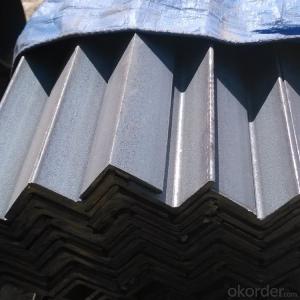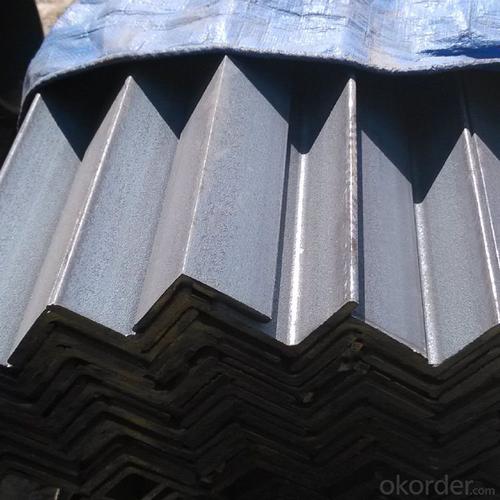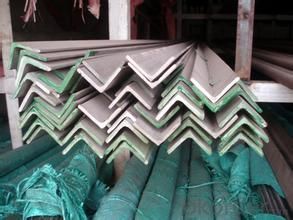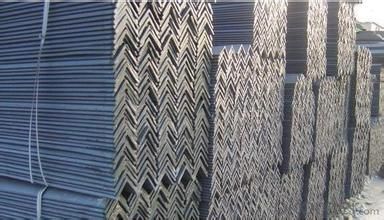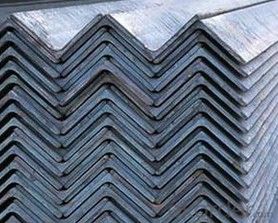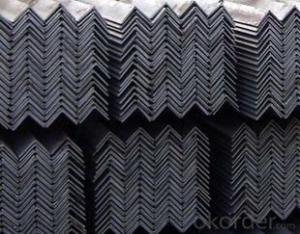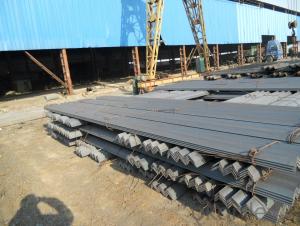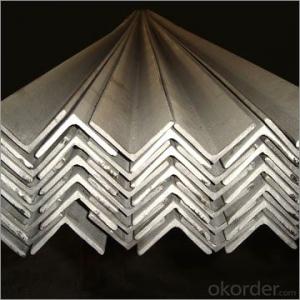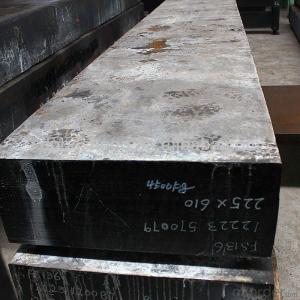A70*70*7 galvanized angle steel for construction
- Loading Port:
- Tianjin
- Payment Terms:
- TT OR LC
- Min Order Qty:
- 25 m.t.
- Supply Capability:
- 10000 m.t./month
OKorder Service Pledge
OKorder Financial Service
You Might Also Like
Product Description:
Angle steel is widely used in various building structure and engineering structure.
a.) beam, bridges, ship;
b.) transmission tower, reaction tower;
c.) lifting transportation machinery;
d.) industrial furnace;
e.) container frame, warehouse goods shelves, etc.
Standard | AISI, ASTM, BS, DIN, GB, JIS, etc mild angle steel |
Grade | Q235, Q345, SS400, A36, S235JR,S355JR, ST37-2,ST52, etc |
Equal Angle steel | Type: 2.5#-20# Size: 25-200mm Thickness: 3.0-20mm Weight: 0.597-71.168kg/m |
Unequal Angle steel | Type: 2.5/1.6-20/12.5 Long Side: 25-200mm Short Side: 16-125mm Thickness: 3.0-18mm Weight: 1.687-43.588kg/m |
Length | 5.8-12.0m OR according to client's request |
Element Contect | C<0.22% Si:<0.16% Mn: 0.30—0.65% P<0.060% S<0.060% |
1.Q:how long the goods will be ready for ?
A:some of goods we have stock and normal delivery time is 15-25d ays after received the deposit .
2.Q:How can we get more discount for the order ?
A:first ,T/T payment is much cheaper ,then the more you want the more discount you will be get
3.Q:Can your company provide unequal type angle steel ?
A:Yes , We provide equal angle steel 20*20*3/4 - 200*200*14/16/18/20 and unequal angle steel 25*16*3/4-200*125*12/15/16/18 specification
Protect horn tape is different from the traditional paper tape, using two plating steel to enhance, can protect the corner edge wear does not harm the increasingly into a corner. Protect horn tape more convenient than traditional metal construction. Our corner tape roll is packing, convenient construction and reduce waste. Customers can according to the length of the need to cut, and protect horn tape can be widely used in arch, arc and other edges does not exceed 90 °. Used to form Yang Angle bead surface to withstand shocks, the use of a typical in the Windows and doors mouth department.
The advantages of our products
1) professional mature production line
2) large production capacity.
3)Strict quality testing
4) factory price and best quality
5) fast delivery
6) high efficient after-sales service
7) emergency stockpile
8) we promise all of the queries and emails will get our reply within 24 hours.
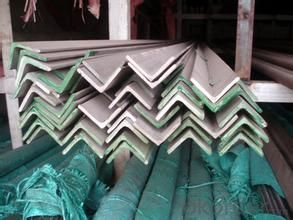
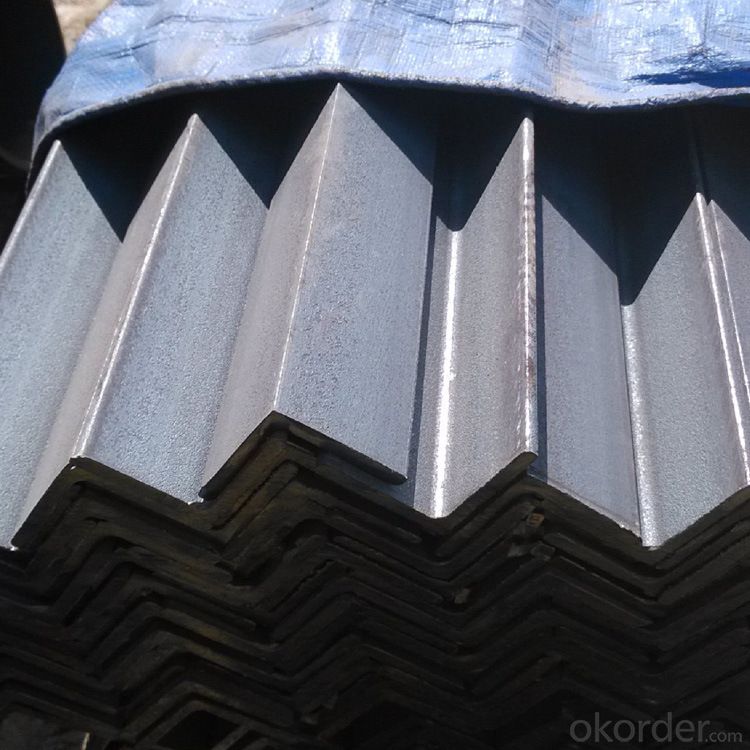

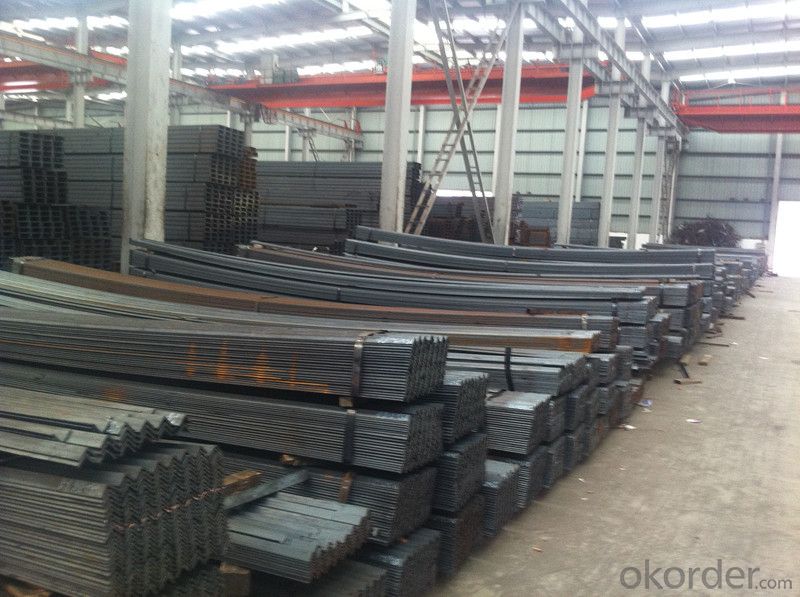
- Q: Can steel angles be used for door frames?
- Indeed, door frames can utilize steel angles. These angles are frequently employed in the construction industry due to their robustness and endurance. They furnish a firm and steady foundation for the door frame, guaranteeing its steadfastness and durability. Moreover, steel angles can be effortlessly tailored and trimmed to suit the specified dimensions of the door frame. They also possess resistance to distortion, decay, and termite infestation, rendering them an excellent selection for door frames. In conclusion, steel angles present a dependable and utilitarian approach to constructing door frames.
- Q: How do steel angles contribute to the overall stability of a structure?
- Steel angles contribute to the overall stability of a structure by providing additional strength and support. They are often used as structural members in construction projects to connect and reinforce different components, such as beams and columns. The angles help distribute and transfer loads, improving the structure's resistance to bending, buckling, and other forces. Additionally, their L-shape design allows them to resist shear and torsional stresses, enhancing the overall stability and integrity of the structure.
- Q: What are the typical lengths of steel angles?
- The typical lengths of steel angles vary depending on their intended use and application. However, steel angles are commonly available in standard lengths of 20 feet or 6 meters. These standard lengths are often preferred by manufacturers and construction companies due to their convenience and ease of transportation. Additionally, steel angles can be custom cut to specific lengths as per the requirements of a particular project.
- Q: What are the common welding techniques for steel angles?
- The common welding techniques for steel angles include shielded metal arc welding (SMAW), gas metal arc welding (GMAW), and flux-cored arc welding (FCAW).
- Q: What is the meaning of the number of angle steel
- The model does not mean the size of the different edges and sizes of the same model. Therefore, the width, the edge and the thickness of the angle iron should be filled out in the contract and other documents, so as not to be indicated by the model alone. The specification for hot rolled equilateral angle iron is No. 2 - 20.
- Q: Can steel angles be used in earthquake-resistant building designs?
- Indeed, earthquake-resistant building designs can incorporate the usage of steel angles. Steel, renowned for its exceptional strength and ductility, proves to be a suitable material for constructing earthquake-resistant structures. In various applications, steel angles, also referred to as L-shaped steel sections, can be employed to provide structural support and reinforcement. One of the primary benefits of incorporating steel angles into earthquake-resistant building designs lies in their capacity to withstand lateral loads and shear forces. The L-shape of these steel angles establishes a robust and stable connection between distinct structural components, effectively distributing and transferring loads during seismic events. Consequently, this aids in mitigating structural deformation and averting collapse. Additionally, the fabrication and installation of steel angles are exceptionally convenient, rendering them a favorable choice for earthquake-resistant designs. These angles can be welded, bolted, or riveted to other steel elements, ensuring a sturdy and dependable connection. Furthermore, customization options are available, allowing for structural configurations to be tailored to meet specific design requirements. Furthermore, steel angles exhibit commendable fire resistance properties, a crucial aspect to consider in earthquake-resistant designs. Compared to other building materials, steel retains its structural integrity for an extended period in the event of a fire, thereby reducing the risk of collapse during rescue operations. To conclude, it is evident that steel angles can indeed be utilized in earthquake-resistant building designs. Their exceptional strength, ductility, and capability to withstand lateral loads make them an invaluable component in structural systems. By implementing appropriate design and installation techniques, steel angles can enhance the overall resilience and safety of buildings situated in earthquake-prone areas.
- Q: What are the common lengths available for steel angles?
- The common lengths available for steel angles vary, but they typically range from 20 feet to 40 feet.
- Q: What are the common tolerances for steel angles?
- The common tolerances for steel angles typically include variations in dimensions such as length, width, and thickness. These tolerances can vary depending on the specific industry standards, but commonly accepted tolerances for steel angles are generally within a few millimeters or fractions of an inch.
- Q: Can steel angles be used for sign supports?
- Absolutely! Sign supports can definitely utilize steel angles. With their strength and stability, steel angles are an ideal choice for supporting signs of different dimensions and weights. The construction industry widely employs steel angles for various structural purposes, including sign supports. By effortlessly welding or bolting them together, a robust framework for signs can be effortlessly created. Furthermore, steel angles boast durability and resistance against environmental elements like wind, rain, and corrosion, guaranteeing long-lasting and reliable sign supports.
- Q: Can steel angles be used for fencing and gate construction?
- Yes, steel angles can be used for fencing and gate construction. Steel angles are commonly used in construction projects due to their strength and durability. They provide a strong framework for fencing and gate structures, offering support and stability. Steel angles can be easily welded or bolted together to form the desired shape and size for fencing and gate construction. Additionally, steel angles have a high resistance to corrosion, making them suitable for outdoor applications. Overall, steel angles are a versatile and reliable choice for fencing and gate construction.
Send your message to us
A70*70*7 galvanized angle steel for construction
- Loading Port:
- Tianjin
- Payment Terms:
- TT OR LC
- Min Order Qty:
- 25 m.t.
- Supply Capability:
- 10000 m.t./month
OKorder Service Pledge
OKorder Financial Service
Similar products
Hot products
Hot Searches
Related keywords
